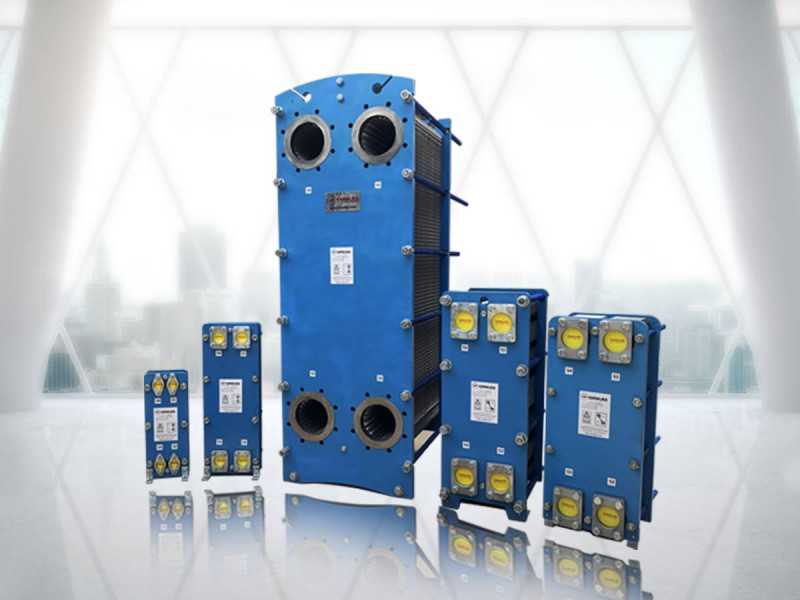A heat exchanger is a heat-transfer device that is used for the transfer of thermal energy b/w two or more fluids (gas or liquid) available at different temperatures. The primary elements of a PHE include the heat transfer plates, gaskets, the supporting end frames (a fixed and a movable cover plate or frame) that house inlet & outlet fluid port nozzle, carrying and guiding bars, the supporting column, and end-frame tightening bolts. This type of heat exchanger has a highly effective heat transfer coefficient many times higher than shell & tube heat exchanger & other conventional type heat exchangers. Typical applications include pharmaceutical plants, gearbox oil cooling systems, formaldehyde plants, Dairy products, acid cooling systems, air conditioning & refrigeration systems, hydraulic oil cooling low oil cooling marine applications, Pulp and paper industry applications, among others. These heat exchangers further classified as Gasketed Plate Heat Exchanger, Fully Welded Heat Exchanger, Double Wall Plate Heat Exchanger, Laser Welded Plate Heat Exchanger/ Semi Welded Plate Heat Exchanger, Brazed plate heat exchanger. Classification of Plate Heat Exchangers as follows:- Gasketed plate heat exchanger Gasketed PHE consists of thin, rectangular, pressed corrugated sheet metal plates (0.4 to 0.8mm thickness) that are sandwiched between full peripheral gaskets and clamped together in a frame. The frame has a fixed plate, fitted with the connecting ports, which is bolted together with a movable cover plate to hold the embossed plates in between the top and bottom carrying bars to allow proper alignment of the plates. The peripheral gaskets which are stick with corrugated plates provide the flow channel space between the adjacent plates as well as appropriate flow paths for the hot and cold fluids in alternate channels. It\'/s easy to maintenance & occupied less area as compared to Shell & tube heat exchanger. Semi-welded plate heat exchanger/Laser welded plate heat exchanger In the semi-welded heat exchanger, two heat transfer plates are welded by laser welding to make what is commercially called twin plates or modules, a semi-welded PHE is configured by assembling them in a plate and frame pack with peripheral gaskets only in the plate channels that handle the alternate fluid stream. This design is especially useful for handling relatively corrosive media where gasket heat exchangers are not suitable, which flows in the welded twin plate channels or modules. The only gaskets in contact with this medium are two circular port-hole of the peripheral gaskets between the welded plate pairs that are available in highly resistant elastomer and non-elastomer materials. The semi-welded PHEs can withstand pressures up to 30 bars on the welded twin-plate or b/w welded module fluid side, though it should be pointed out that frames are still needed to hold the plate pack. The relatively higher pressure operation extends its applications to include evaporation and condensation in refrigeration and air-conditioning systems and most commonly used for ammonia fluid.

